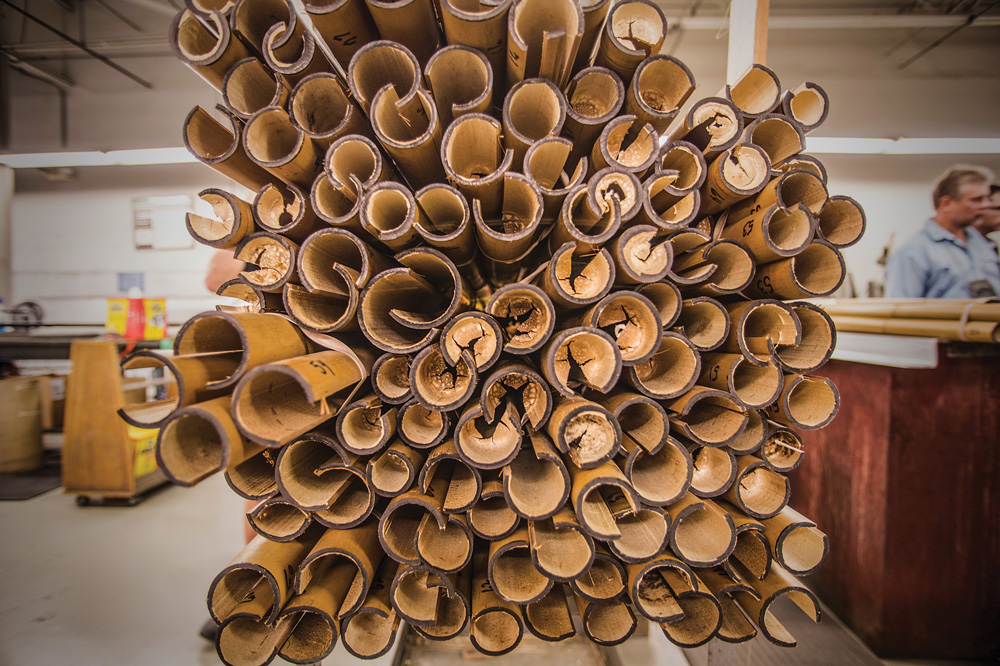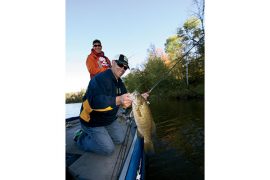
Once overshadowed by modern rod materials, the essence of bamboo is being rediscovered by contemporary anglers.
[by Tom Keer]An ad on page 37 of my March 1974 issue of Field & Stream promotes the new Fenwick HMG fly rod. This rod was 25 percent lighter than fiberglass and 40 percent lighter than cane. The blank was constructed from a new material called graphite that was invented in 1965 by William Watt of the Royal Aircraft Establishment. Rod blanks rolled from this cutting-edge material set forth a standard that would change the face of fly rod construction for decades to come, and the material was universally accepted because it decreased vibration, added greater hoop strength, and increased energy transfer.
“We expect imitators,” the visionary advertising copy stated. “Many graphite rods will appear in the years ahead, but there will be only one HMG, then as now.”
In what seemed like a blink of an eye, many cane rods were hung by the loops in their cloth sacks in a first-floor closet, the preferred way to keep wooden tips from getting a curve caused from leaning against a wall (known as a set). It was the end of an era, and marquee names like Ed and Jim Payne, Pinky Gillum, Everett Garrison, Gene Edwards, Hiram Leonard, Paul Young, and Wes Jordan were replaced by new names.
But recently, cane experienced somewhat of a resurrection, giving credence to the adage “the more things change, the more they stay the same.”

Boutique versus Production Construction
Back in the day, some companies mass-produced bamboo rods in an assembly-line fashion. Theirs was a smart move. Before fiberglass, the expanding recreational fishing industry needed cane rods, and lots of ’em. Some were used for surf casting with squidding line and level-winding reels, others were used offshore, and still others found themselves in a rod holder in the stern of a boat for trolling. As fly fishing gained traction throughout the 1900s, more and more rods were built to meet the expanding demand, one that was filled by manufacturing companies.
But cane fly rods also spurred a cottage industry, one that was boutique in nature, and one that is growing today. The old-school boutique rods attracted the most attention, mostly because each was produced by either one or a few…





